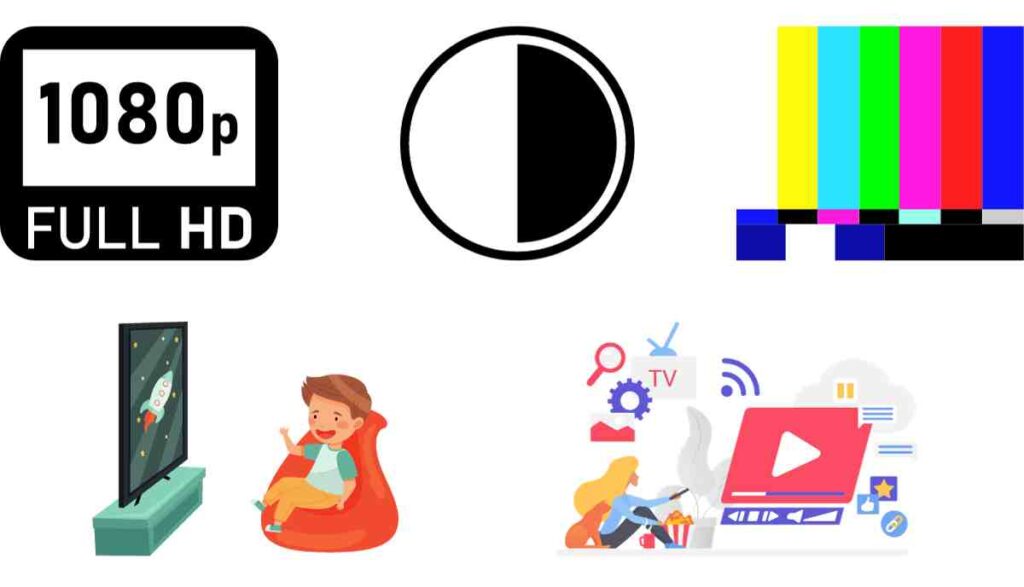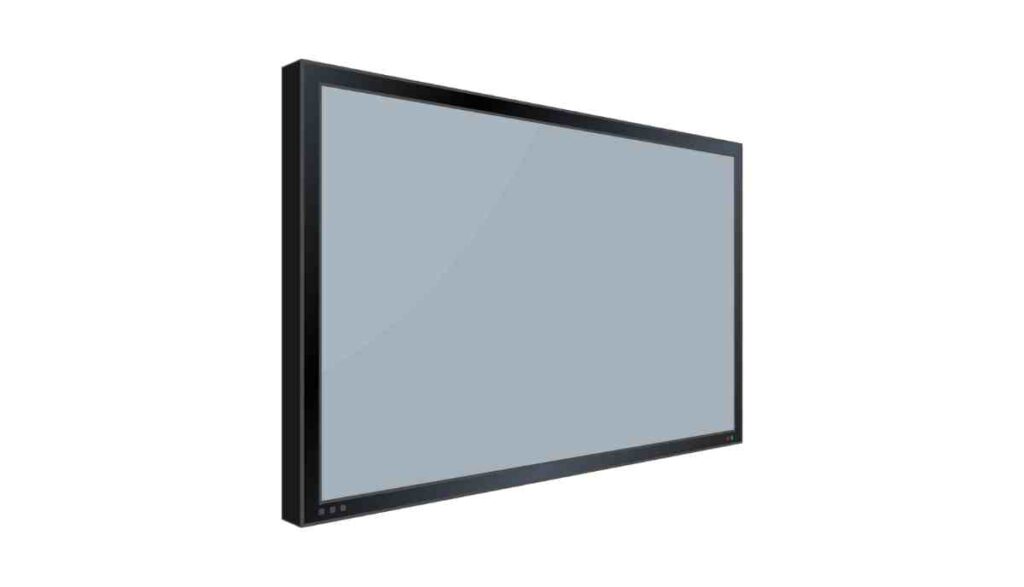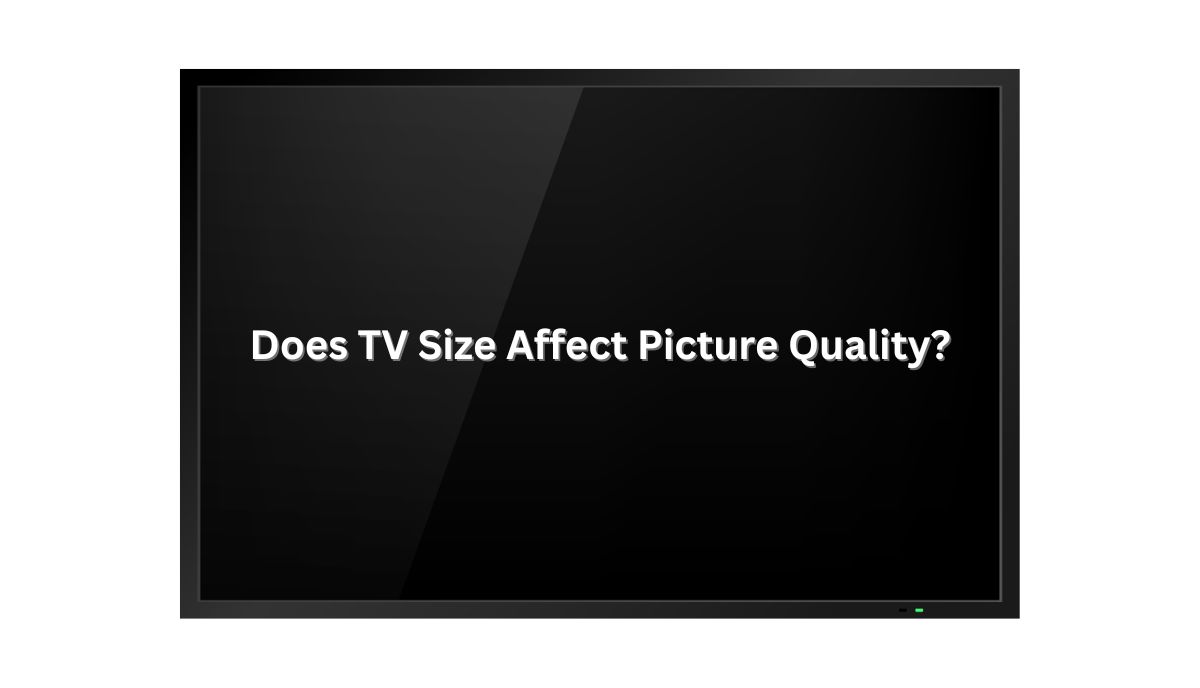TV size influences your viewing experience, but it’s not the sole factor in picture quality. Learn how resolution, contrast, color, and viewing distance play key roles in your TV’s visual performance.
What Factors Besides Size Influence Picture Quality On A TV?

TV size matters. You can’t discount it. However, the following factors have a more substantial impact on the picture quality:
1). Resolution
This is the most important consideration because TVs use pixels to paint moving images, and the resolution reveals the number of pixels on the screen. According to this 2019 paper in the Quality and User Experience journal, pixel resolution has grown dramatically in the last few decades. UHD and 8K are becoming increasingly common because consumers appreciate the role the resolution plays in improving picture quality.
2). Contrast
The contrast doesn’t get as much attention even though it can significantly influence the picture quality by defining the difference between an image’s darkest and brightest parts. The best TVs have the highest contrast ratio.
3). Color
The more expansive a TV’s color palette, the higher the image quality. Color and brightness go hand in hand.
4). Viewing Distance
Where is the TV located? Are you watching it from a few feet or several meters away? What about the angle? You can ruin your viewing experience by watching the TV from the wrong angle.
5). Source
Have you noticed that streaming platforms have expensive packages that offer a higher picture quality for an extra fee? On the other hand, shows and movies from some networks look ugly regardless of your TV’s capabilities. A TV station or streaming platform’s signal will shape the picture quality.
Is A Larger TV Always Better In Terms Of Picture Quality?

The picture quality depends on the resolution. Theoretically, a 60-inch 4K TV will deliver the same image quality as its 32-inch 4K counterpart. But if that is true, why do people gravitate towards larger TVs?
A larger TV increases the distance from which you can watch it. This can work against the large TV because the image quality may appear to deteriorate if you sit too close. You must maintain the optimal viewing distance.
Are There Any Drawbacks To Having An Extremely Large TV In Terms Of Picture Quality?
You can’t compare small and large TVs when the distance is the same. It takes a higher viewing distance to appreciate a large TV’s picture quality.
Sitting too close will strain your eyes and prevent you from seeing the entire screen. Large TVs are only necessary for large rooms that demand greater viewing distances. Otherwise, they don’t serve a purpose. A smaller room with shorter viewing distances calls for a smaller TV.
It is worth noting that larger appliances tend to consume more power, and TVs are no different. Anker has published a table in which the wattage seems to grow with the TV size. More importantly, the largest TVs are also the most expensive. Consider the financial implications before buying the largest TV the market can offer.
Can A Smaller TV Have The Same Picture Quality As A Larger One?

A smaller TV will deliver the same picture quality as a larger TV if their resolutions match. In fact, smaller TVs produce sharper images because of the pixel density. Think about it. If small and large TVs have the same resolution, you have more pixels per inch on a small screen than on a larger one.
But again, the viewing distance is the deciding factor. You can’t appreciate a small TV’s sharp imagery if you maintain a significant viewing distance.
What Is The Ideal TV Size For My Viewing Distance To Maintain Picture Quality?
- 7 feet/2 meters for 32 inches.
- 8 feet/2.5 meters for 40 – 43 inches.
- 9 feet/3 meters for 48 – 50 inches.
- 11 feet/3.7 meters for 55 inches.
- 13 feet/4 metes for 65 inches.
But you can experiment until you find an optimal viewing distance. If you have the time, move back and forth while recording the results. You should also adjust the viewing angle. Better yet, check the manual or ask the manufacturer for a recommendation.
Some guides, such as this one from Sony, expect you to base the viewing distance on your personal preferences. Others may offer concrete recommendations.
What Should I Consider When Choosing A TV Size For The Best Picture Quality In A Small Room?
TV size selection isn’t nearly as arbitrary as some people think. You’re less likely to make a mistake if you keep the following in mind:
1). Viewing Distance
The viewing distance is vital. PCmag expects consumers to apply a ratio of 1.4:1 (maximum distance to screen size) based on THX’s suggestions. THX thinks a 40-degree arc field of view is the best. You can also apply 1:1.4 (for the minimum screen size to distance ratio).
You will get an accurate screen size estimate when you divide the distance between the couch and the location (where the TV will sit) by 1.4. PCmag has included a table showing the appropriate distance between the TV’s location and the couch for each screen size. With this information, you can quickly determine the correct screen size once you identify a suitable place for the TV.
2). Position
The viewing distance and the TV’s position go hand in hand. Will you mount the TV on a wall? Will it sit on a table? The wall saves space and reduces or prevents reflections. However, the viewing angle may also change as a result.
3). Resolution
The resolution is the most important consideration. The correct viewing distance and angle don’t matter if the resolution is still too low. You want a TV with as many pixels as possible. This promises sharper images.
4). Preference
Ultimately, your preference should dictate your decision. What if you don’t have a preference? Find out what you like. Get a cardboard that matches the TV size you want. Poster paper can also work. Place the cardboard on the TV stand or wall, and determine how comfortable it feels. This works best if the cardboard or paper has an image for you to look at.
Keep changing the screen size until you locate TV sizes and viewing distances that fit your needs.
If you still have doubts about your decision, find a middle ground. Stick with 32 to 55 – inch TVs. Keep in mind that a large TV requires a higher viewing distance to optimize the picture quality.
Are There Specific TV Brands Or Models Known For Maintaining Picture Quality Across Different Sizes?
The resolution and viewing distance determine the picture quality you get from different TV sizes, not the brand. This applies to every brand. Naturally, some bands are better than others. Forbes has a list of the best TV brands for anyone looking to upgrade their screen.
Names like Samsung and Hisense lead the charge. However, if you prefer a brand that doesn’t appear on this list, the picture quality should remain consistent even when the TV sizes change, but only if you select the correct resolution and viewing distances.
Things You Need To Know About TV Sizes
1). TV Size Influences Purchasing Decisions
According to one study highlighted by this Samsung article, screen size was the primary reason why consumers chose to buy a new TV. They wanted to upgrade the size. So clearly, people care about TV size, regardless of whether or not it improves the picture quality.
2). TV Sizes Are Growing
The NDP Group’s TV Ownership Trends Report (2022) found that screen sizes had risen to an average of 47.5 inches. This amounts to a three-inch increase. In fact, screen sizes were growing by one each annually before the pandemic.
After the pandemic, many families began buying new TVs with the intention of getting bigger screens to improve the quality of their home entertainment. While 38 percent wanted better picture quality, 44 percent sought larger screens.
3). The Industry Is Promoting Larger TV Sizes
Manufacturers want to make money. Promoting the sale of larger TV sizes allows them to maximize their profits. Paul Gray (IHS Markit TV Division’s Research And Analysis Director) told Forbes in 2019 that the secondary TV set market was shrinking.
Additionally, manufacturers have noticed that, despite their popularity, smartphones and tablets create solitary viewing experiences. Many consumers want large TVs because they allow families to watch content together.
With these considerations in mind, you can see that many people don’t consider picture quality when they buy large TVs. That said, the average consumer expects the picture quality to increase with the screen size, even though this isn’t always the case.

